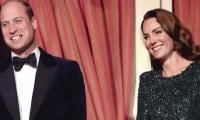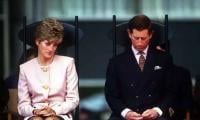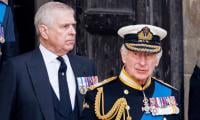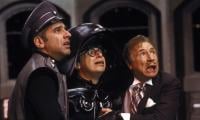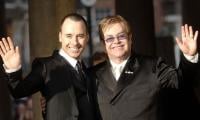LONDON: India and Pakistan celebrate 71 years of Independence. The British National Health Service owes them a debt of gratitude, international media reported.
Great Britain’s national dish is famously chicken curry, but South Asia’s impact on this Sceptred Isle extends far beyond food. It is a testament to how ingrained into the British psyche the stereotypical Indian doctor has become that in 2005 a poll of Brits found the doctor they’d most like to consult is a 30-something South Asian female. In 2010 the BBC even ran a popular TV series simply entitled ‘The Indian Doctor’ following a story played out across the UK in the 1960s and 1970s, that of a humble family physician from the Indian subcontinent finding his feet in a country that asked him to come over and save the still-young ‘National Health Service’.
In 1948, India and Pakistan were not yet one year old when the NHS was created. Over subsequent years, recruitment drives encouraged young doctors to make a new home in the UK. Tens of thousands answered the call and it is no exaggeration to say the NHS would not have survived without them.
Now a swollen behemoth comprising some 1.8 million staff, the NHS is the world’s fifth largest employer. It is estimated to have a bewildering shortfall of 100,000 staff. Unsurprisingly almost 40% of Tier 2 (skilled) visa applications to the UK are to take up positions in the NHS. Yet over the last 13 years, South Asian doctors have been made to feel less welcome. In the first four months of 2018 alone, 400 visa applications from Indian doctors were rejected.
Before Theresa May became Prime Minister, she introduced a rigid cap on immigration from outside the European Union and in recent years the NHS has recruited many thousands of doctors, nurses, physiologists, radiographers and numerous more healthcare workers from the EU. With Brexit months away and migration from the EU dwindling, the UK is once again turning to South Asia. In response to the growing need for healthcare professionals, one of the current Home Secretary’s first actions after his appointment was to exempt non-EU doctors and nurses from the immigration cap. Nevertheless, the health service remains desperately short-staffed.
The NHS started its life in July 1948 with the noble intention of providing health care to every British citizen, free at the point of access. This ambitious plan ran into problems almost immediately. British doctors, typically affluent white men, were reluctant to relinquish time spent in lucrative private practice nor were they keen to work in deprived areas of the country. Confusingly, in 1957 the government also cut the number of medical school places, apparently ignorant of the rapidly-expanding post-war population.
This combination of factors meant that by the 1960s, the NHS was already in danger of collapse. Waves of British doctors, fed up by their reduced pay and NHS working conditions, emigrated to the USA, Canada, and Australia. The chairman of the British Medical Association’s Committee for Planning estimated that the yearly emigration of British trained doctors amounted to between 30 and 50% of the annual number of domestic medical graduates.
It is an ironic twist of history that the man who ushered in an influx of Asian doctors would later go on to foment anti-immigrant sentiments with infamous inflammatory speeches. Enoch Powell, best remembered for his xenophobic ‘Rivers of Blood’ speech, was health minister at the start of the 1960s and proposed looking to South Asia to fill the NHS’s gaps. He oversaw the arrival of 18,000 junior doctors from the subcontinent, commenting that they “provide a useful and substantial reinforcement of the staffing of our hospitals and who are an advertisement to the world of British medicine and British hospitals”.
Ten medical schools had been founded by the British during their colonial occupation of India and as others sprung up, there were soon thousands of medical graduates, trained in English and in a similar manner to British medical schools. Great Britain also looked to the west for its nurses, imploring considerable numbers to come from countries like Jamaica, Trinidad, and Guyana, just as independence was sweeping through the Caribbean
There was a steady influx of South Asian doctors from the 1960s until the 1990s. Their experiences were varied but also striking in their common themes. Bright-eyed junior doctors set foot in the land of their former colonial masters, determined to make waves as renowned cardiologists or surgeons but instead faced institutional racism and career dead-ends.
They were corralled into so-called ‘Cinderalla specialties’; overlooked, underfunded and distinctly unglamorous. Many found themselves in old age psychiatry, genitourinary medicine, and geriatric medicine. Modern geriatricians often credit the influx and enthusiasm of South Asian doctors for shaping the critical specialty it has become today.
The majority were given no option but to work as GPs (general practitioners) in deprived areas such as rural mining communities or crime-ridden inner cities. While dreams of ascending the ranks of their Royal College slipped away, Asians found themselves the only doctors willing to work in areas serving the very people the NHS had been founded to assist – the poor. Collected accounts of doctors working through these decades consistently name the ability to have a direct impact on impoverished communities as the most rewarding aspect of their job.
In 1961, one of the country’s most pre-eminent doctors, the 1st Baron Cohen of Birkenhead, addressed the House of Lords, stating “the Health Service would have collapsed if it had not been for the enormous influx from junior doctors from such countries as India and Pakistan”.
So dependent upon these doctors had the NHS become, that a transcript from the Ministry of Health fretted over the possible effect of an (albeit short-lived) war between India and Pakistan:
“…Dr. Elliott of the MPU is reported as saying that the NHS was in danger of collapsing, possibly within the next few months, because of diminishing manpower. The war between India and Pakistan might result in the recall to India and Pakistan of doctors from British hospitals which could, therefore, face paralysis within weeks … The same unpleasant thought had occurred to us and we have been considering what we can do.”
Yet analysis of correspondence to the British Medical Journal over the ensuing decades revealed a steady stream of objection to these new foreign colleagues.
By the 1970s South Asian doctors had become a familiar sight in the UK. In 1971 just over one-third of workers in the English NHS were from overseas. The fact so many Asian GPs had been allocated oversubscribed single-handed practices in isolated areas meant many faced overt racism. However, the majority became integrated pillars of their communities, respected as trusted doctors when general practice had not yet achieved the status of other medical specialties. The start of the decade also saw Bangladesh win independence from Pakistan, the UK vote to join the European Union and Idi Amin forcibly eject around 60,000 Indians and Pakistanis. Almost 30,000 of them made their new homes in the UK, again bolstering the NHS workforce.
In 1972, disquiet amongst the famously conservative British medical fraternity had persuaded the General Medical Council to cease recognizing Indian medical graduation as sufficient for registration to practice in the UK, establishing yet another hurdle for the new recruits, still so desperately needed the ever-expanding NHS.
When the 1980s arrived, 16% of GPs working in England and Wales had been born in India, Pakistan (including what would later become Bangladesh) and Sri Lanka. However, when examining inner cities this figure could rise to in excess of 50%. In 2003, 73% of GPs working in the underprivileged Rhondda Valley in Wales were of South Asian origin.
Racism and discrimination have been constant experiences for all overseas workers throughout the history of the NHS. Nurses, doctors, and other healthcare professionals found themselves unable to achieve positions of responsibility, earn equal pay and unsuccessful when applying for prestigious jobs. This has led to several professional bodies acknowledging and apologizing for this unfortunate legacy.
Today you are almost as likely to see a Dr. Patel as a Dr. Smith in the UK. There are 1724 Dr. Patels in the UK (in contrast to 1750 Dr. Smiths). Recent figures from the General Medical Council suggest around 29,000 doctors practicing in the UK graduated in India and 7,500 in Pakistan. Overall around a third of NHS doctors gained their medical degree outside the UK.
Jawaharlal Nehru’s legendary Independence speech ushered in the birth of two giant nations at the stroke of midnight precisely 71 years ago. He spoke of the tryst with destiny made by a colonized people, redeemed as they won freedom from the British Empire. At the end of the twentieth century, Britons voted the NHS as one of their greatest ever achievements and this monumental institution has ensured the United Kingdom and South Asia have remained intrinsically linked.
A perpetual political football, the NHS limps on with a drastic staff shortfall and continued dependency on imported labour. The first waves of South Asian doctors have retired and once again, home-grown medics are reluctant to work in the deprived parts of the country that are now on the hunt for young doctors. With Great Britain and Northern Ireland leaving the EU, it may well be a tryst with destiny that sees doctors and nurses from India, Pakistan, Bangladesh and Sri Lanka once again keep the NHS afloat.
Rohin Francis is a cardiology fellow and PhD candidate in London. He makes YouTube videos about medicine which have no clinical utility. He once drove an autorickshaw from Kathmandu to Kerala. He can be reached @MedCrisis

